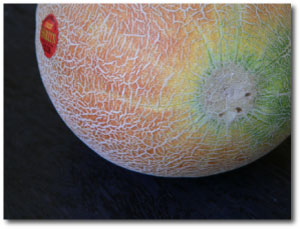
You guys have all read about the recommendation of the IAU committee.
Looks like the Moon’ll be a planet soon! Tidal evolution is currently driving it outward at 3.74 cm per year. It appears that the Moon will be admitted into the planetary club in roughly 30 billion years if we aren’t destroyed by the Sun’s Red Giant phase.

Prompted by a comment from Bob Naeye, I realized that in the original version of the post I had an arithmetic error. In my haste to slap the post up on the blog, I used da/dt=.374 cm/yr rather than the correct value of da/dt=3.74 cm/yr in the timescale estimation.
A first estimate for the Moon’s promotion timescale can be made with the logic:
The Moon becomes a planet when the distance to the moon is such that the Earth-moon barycenter lies at Re (radius of the Earth). The barycenter of the orbit at that time will be defined by
Re*Me=Rm*Mm,
where Me is the mass of the Earth and Mm is the mass of the Moon. The system mass ratio is
Me/Mm=81.28.
According to the IAU draft resolution, the Moon will turn into a planet at the exact moment when the barycenter moves above the surface of the Earth, which is located at Re=6.378e+8 cm. Assuming a circular orbit, the Moon thus needs to be at Rm=5.18e+10 cm, which means that it needs to move out from its current orbital radius by 1.34e+10cm. At the current rate of 3.8 cm/yr, this will take 3.5 billion years, a timescale that is well within the life expectancy of the Earth in the face of possible destruction by the Red Giant Sun.
This is just a first approximation, however. In reality, the time will be considerably longer, both because the tidal force (and hence the dissipation) decreases as the moon goes outward, and because the current rate of tidal dissipation is at a local maximum, most likely because the Earth’s oceans are presently in a near-resonant, highly tidally dissipative configuration.
Assuming a constant value of the tidal quality factor Q, the time interval, T, required for a satellite to recede from an initial orbital radius a_i to an orbital radius a_0 is given by (in TeX notation)
$$ {{2\over{13}} {a_{0}^{13/2} [1-({a_{i}\over{a_{0}}})^{13/2}]\over{{3k_{2}\over{Q}}({G\over{M_e}})^{1/2} R_{e}^5 M_{m}}} = T$$
In the above, R_e is the Earth’s radius, k_{2} is the Earth’s Love number (0.299), M_e is the mass of the Earth, and M_m is the mass of the Moon. Plugging in numbers yields T=9.5 Billion years.
Currently, Q for the Earth is 12. In the past (and probably in the future) the average value for Q will be higher, which will slow down the timescale even more. If we use Q=12 in the above formula to compute the timescale for the Moon to arrive at its current distance, we get 1.57 Billion years. Given that the age of the Earth-Moon system is ~4.5 Billion years, this means that the average Q for the Earth has been more like 30. If we assume that Q=30 holds as a long term average value, then we arrive at a best estimate of T=30 Billion years until the Moon is promoted to planet status.
Hi Greg
Isn’t synchronous orbit between the Earth and Moon achieved somewhere near that orbit? Everything that follows is then driven by the Sun. I thought the Moon was supposed to then reverse its outwards motion.
Hi Adam,
Turns out that the Earth and Moon reach a spin synchronous configuration after the barycenter leaves the surface of the Earth. The Moon will indeed start to come back inward after that, and will eventually be demoted from its planetary status. I’m working on a post right now about this highly important issue ;)